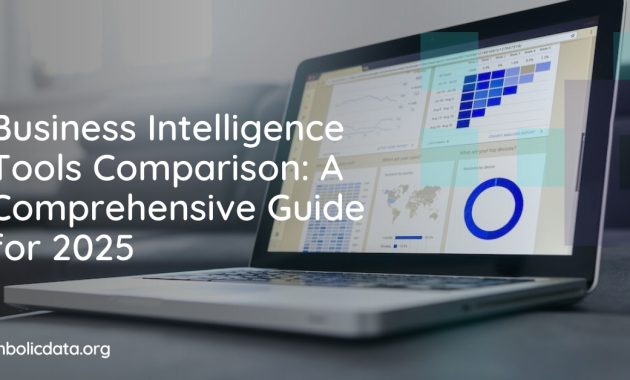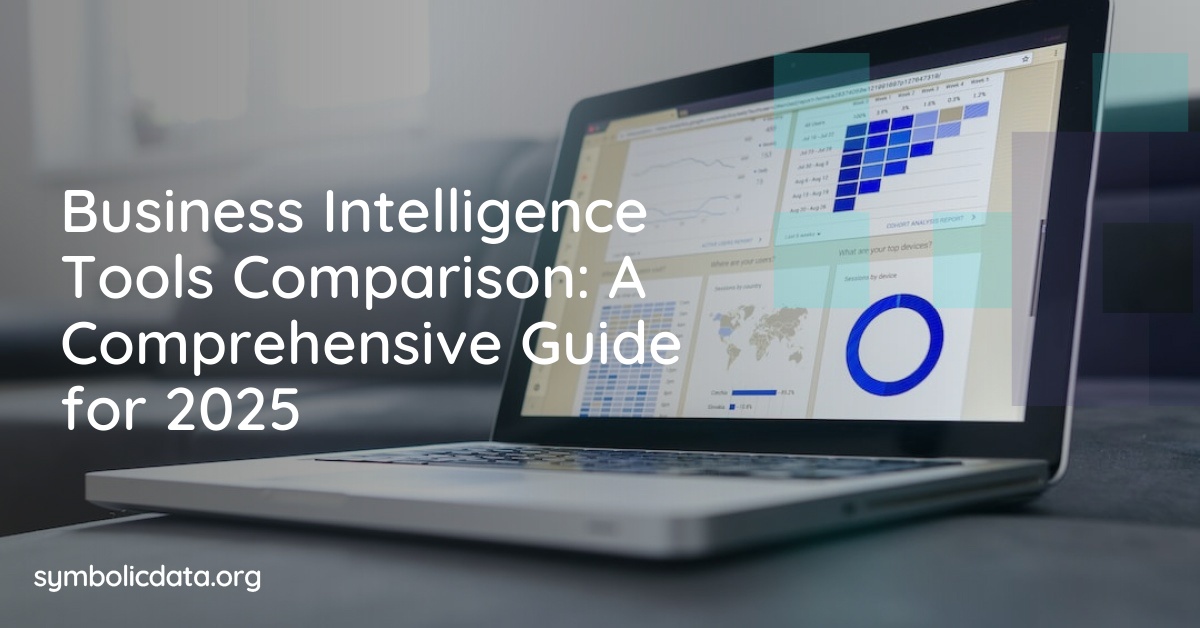
Business Intelligence Tools to Test Before Buying: A Comprehensive Guide
In today’s data-driven landscape, businesses are drowning in information. The ability to extract meaningful insights from this ocean of data is no longer a luxury, but a necessity. This is where Business Intelligence (BI) tools come into play. They empower organizations to analyze data, identify trends, and make informed decisions. However, with a plethora of options available, choosing the right BI tool can be a daunting task. This comprehensive guide will walk you through the crucial steps of testing Business Intelligence tools before making a purchase, ensuring you invest in a solution that truly meets your needs.
Understanding the Importance of Testing BI Tools
The selection of a Business Intelligence (BI) tool is a significant investment. It impacts not only the financial aspect but also the operational efficiency and strategic direction of your organization. Choosing the wrong tool can lead to wasted resources, inaccurate insights, and ultimately, poor decision-making. Thoroughly testing potential BI solutions is paramount to mitigate these risks. It allows you to assess the tool’s capabilities, usability, and compatibility with your existing infrastructure. It also provides an opportunity to evaluate the vendor’s support and training offerings.
Defining Your Business Needs
Before diving into the testing phase, it’s crucial to define your specific business needs. What are the key performance indicators (KPIs) you need to track? What types of reports and dashboards are essential for your decision-making process? Who will be the primary users of the BI tool, and what are their technical skill levels? These questions will guide your evaluation process and help you identify the features and functionalities that are most important.
- Identify Key KPIs: Determine the metrics that are most critical to your business success.
- Define Reporting Requirements: Specify the types of reports and dashboards needed.
- Assess User Skill Levels: Understand the technical proficiency of your users.
- Determine Data Sources: Identify the data sources that need to be integrated.
Creating a Testing Plan
A well-structured testing plan is essential for a successful evaluation. This plan should outline the testing objectives, scope, methodology, and timelines. It should also include a list of specific test cases designed to assess the tool’s performance across various functionalities. Consider the following elements when developing your testing plan:
- Testing Objectives: Clearly define what you want to achieve through testing.
- Scope: Determine the specific features and functionalities to be tested.
- Methodology: Specify the testing approach, such as user acceptance testing (UAT).
- Timeline: Establish a realistic timeframe for the testing process.
- Test Cases: Develop specific test cases to evaluate performance.
Evaluating Key Features of Business Intelligence Tools
When testing Business Intelligence tools, focus on evaluating key features that directly impact your ability to analyze data and gain insights. These features include:
Data Integration
The ability to connect to and integrate data from various sources is critical. Ensure the tool supports the data sources relevant to your business, such as databases, cloud platforms, and spreadsheets. Test the ease of data extraction, transformation, and loading (ETL) processes. Verify the tool’s data quality and cleansing capabilities.
Data Visualization
Effective data visualization is essential for communicating insights. Evaluate the tool’s ability to create a variety of charts, graphs, and dashboards. Assess the customization options and the ease of creating interactive visualizations. Test the tool’s ability to handle large datasets and display them effectively.
Reporting and Dashboards
Reporting and dashboards are the primary outputs of a Business Intelligence tool. Evaluate the tool’s ability to generate customizable reports and dashboards. Test the reporting features, such as drill-down capabilities, filtering options, and scheduling functionalities. Ensure the dashboards are user-friendly and provide a clear overview of key metrics.
Data Analysis
The tool’s analytical capabilities are crucial for uncovering hidden patterns and trends. Evaluate the tool’s ability to perform advanced analytics, such as statistical analysis, predictive modeling, and what-if scenarios. Test the tool’s integration with data mining and machine learning algorithms.
User Interface and Usability
A user-friendly interface is essential for widespread adoption. Evaluate the tool’s ease of use and intuitive navigation. Test the tool’s accessibility and responsiveness across different devices. Consider the learning curve for users with varying technical skills.
Performance and Scalability
The tool’s performance should be able to handle your current and future data volumes. Test the tool’s processing speed and response times. Evaluate the tool’s scalability to accommodate growing data volumes and user bases. Assess the tool’s stability and reliability under heavy loads.
Security and Governance
Data security is paramount. Evaluate the tool’s security features, such as user authentication, access controls, and data encryption. Test the tool’s compliance with relevant data privacy regulations. Assess the tool’s data governance capabilities, such as data lineage and audit trails.
Testing Methodology: A Step-by-Step Approach
Implementing a structured testing methodology ensures a comprehensive evaluation. Consider the following steps:
- Data Preparation: Gather and prepare your data for testing.
- Tool Installation and Configuration: Install and configure the tool according to the vendor’s instructions.
- User Training: Provide training to the users involved in the testing process.
- Test Execution: Execute the test cases outlined in your testing plan.
- Data Validation: Validate the accuracy and completeness of the results.
- Usability Testing: Conduct usability tests to assess the user experience.
- Performance Testing: Evaluate the tool’s performance under various conditions.
- Documentation and Reporting: Document your findings and generate reports.
Key Considerations for Choosing a Business Intelligence Tool
Beyond the technical aspects, several other factors should influence your decision-making process. Consider the following:
- Vendor Reputation and Support: Research the vendor’s reputation and assess their customer support offerings.
- Total Cost of Ownership (TCO): Evaluate the total cost, including licensing fees, implementation costs, and ongoing maintenance.
- Training and Implementation: Assess the availability of training and implementation services.
- Integration with Existing Systems: Ensure the tool integrates seamlessly with your existing IT infrastructure.
- Scalability and Future-Proofing: Consider the tool’s ability to scale and adapt to future business needs.
- User Adoption: Assess the likelihood of user adoption and ease of use.
Specific Business Intelligence Tools to Consider and Test
The market offers a wide range of Business Intelligence tools, each with its own strengths and weaknesses. Several popular options include:
- Tableau: Known for its powerful data visualization capabilities and user-friendly interface. [See also: Tableau vs Power BI: Choosing the Right Tool]
- Microsoft Power BI: A versatile tool with strong integration with Microsoft products and a competitive price point.
- Qlik Sense: Offers associative data modeling and a focus on self-service BI.
- Looker: A cloud-based BI platform that emphasizes data modeling and collaboration.
- Sisense: Known for its in-memory data processing and fast performance.
Before making a final decision, test each of these tools against your defined criteria and use cases. Trial versions and free demos are often available, providing an excellent opportunity to evaluate their features and functionalities.
Best Practices for Testing Business Intelligence Tools
To maximize the effectiveness of your testing process, adhere to these best practices:
- Involve Key Stakeholders: Include representatives from various departments to gather diverse perspectives.
- Use Real-World Data: Test the tool with your actual business data to ensure accurate results.
- Document Your Findings: Keep detailed records of your testing process and results.
- Compare Multiple Tools: Evaluate several tools to find the best fit for your needs.
- Seek Expert Advice: Consider consulting with BI experts for guidance and support.
- Prioritize Security: Always prioritize data security throughout the testing process.
Conclusion: Making the Right Choice
Choosing the right Business Intelligence tool is a critical decision that can significantly impact your business’s success. By following the steps outlined in this guide, you can effectively test potential solutions and make an informed purchase. Remember to define your needs, create a comprehensive testing plan, evaluate key features, and consider factors beyond the technical aspects. Thorough testing will empower you to select a BI tool that enables data-driven decision-making and drives your business forward. The right Business Intelligence tools can revolutionize how you understand your data.

